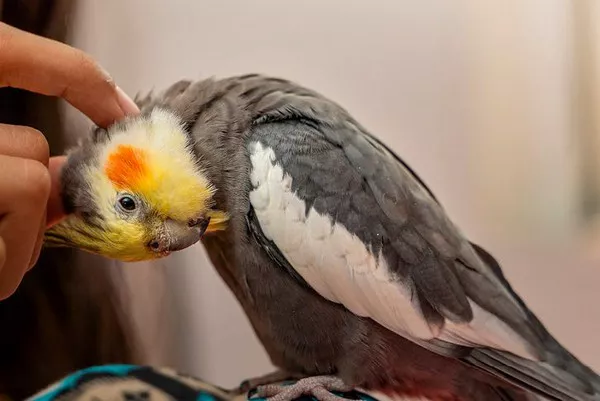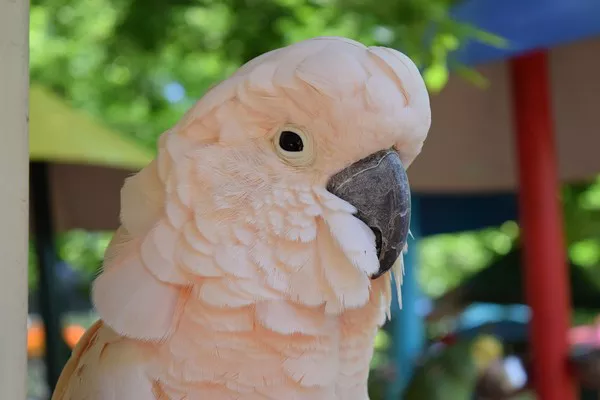Corn snakes, Pantherophis guttatus, are one of the most popular species of pet snakes due to their docile nature, vibrant coloration, and relatively easy care. As with all reptiles, they can sometimes be difficult to read when it comes to behaviors associated with emotional bonds. This leads to the common question: “Can corn snakes show affection?” While snakes do not express affection in the same way as mammals or birds, they can form interactions that may seem like affection to their human caretakers.
In this article, we’ll explore the behavior of corn snakes, how they interact with their environment, and whether or not they can form meaningful bonds with humans. We’ll also dive into the science of reptile behavior and how corn snakes communicate with their surroundings, as well as tips for building a positive relationship with your corn snake.
Understanding the Corn Snake
Before we can discuss affection, it’s essential to understand the corn snake’s natural behavior and biology. Corn snakes are non-venomous constrictors native to the southeastern United States. They are primarily solitary animals that spend most of their time in burrows, under logs, or among dense vegetation, hunting small rodents, birds, and other prey.
Corn snakes have a calm temperament and are often described as friendly or non-aggressive in captivity. They are known for their ability to tolerate handling, which makes them appealing pets for reptile enthusiasts. Despite their often docile nature, snakes, including corn snakes, are not “cuddly” creatures. They don’t have the neurological and emotional capacity to form attachments in the same way that social mammals or birds do.
The Science of Snake Behavior
To determine whether corn snakes can show affection, it’s important to understand how they experience the world. Unlike mammals, which have complex emotional systems governed by hormones like oxytocin, snakes do not have the same capacity for emotional bonding. They lack the brain structures that are associated with complex emotions in mammals. Instead, their behavior is mostly driven by instincts, environmental cues, and survival needs.
Instinctual Behavior: Corn snakes are hardwired for survival and use their instincts to navigate their environment. When they feel safe, they exhibit behaviors that might be mistaken for affection, such as staying still when handled or actively seeking out human interaction.
Hunting and Foraging: Corn snakes are opportunistic feeders, meaning they are not always actively hunting but will eat when food is available. In captivity, they associate their human caregivers with feeding time, which can create a routine of interaction. This regular feeding schedule may lead some owners to perceive the snake as being affectionate, especially when the snake approaches the owner or becomes excited when food is present.
Comfort and Security: Like many reptiles, corn snakes often seek comfort and security. If a snake feels safe and secure in its environment, it might show less defensive behavior. This includes activities like roaming the tank during the day or not immediately retreating when a human is nearby. While not affection in the traditional sense, these behaviors might be interpreted by some owners as the snake being more “comfortable” around them.
Temperature Regulation: Snakes, including corn snakes, are ectothermic (cold-blooded), meaning they rely on external temperatures to regulate their body heat. Sometimes, a corn snake may be drawn to the warmth of a human body or hands. This behavior, known as thermoregulation, can be mistaken for affection. However, the snake is simply seeking warmth and not showing emotional attachment.
Can Corn Snakes Bond with Humans?
While corn snakes cannot show affection in the way that mammals or birds can, it is possible for them to develop a level of familiarity with their human caretakers. This type of bond is based more on routine and recognition than on any kind of emotional attachment. Here are a few ways that corn snakes can “bond” with their humans:
Recognizing Their Caregiver: Corn snakes are capable of learning to recognize their caregivers based on scent, sight, and sound. Over time, if handled consistently and gently, a corn snake may begin to associate its human with positive experiences, such as being fed or being taken out of its enclosure for enrichment. While this recognition doesn’t indicate affection, it does suggest a level of comfort and trust.
Handling and Interaction: Regular, gentle handling can help a corn snake become accustomed to its human’s presence. If a corn snake is handled frequently and in a non-threatening manner, it will often become more relaxed over time. Snakes that are well-socialized with their caretakers are generally less likely to exhibit signs of stress, such as hissing or defensive strikes. While this isn’t affection in the emotional sense, it indicates that the snake feels safe and comfortable with its handler.
Curiosity and Exploration: Corn snakes are naturally curious creatures. When they are comfortable in their environment, they might explore their enclosure or the area around their owner. If a corn snake seems to enjoy being around its owner, it may be more about curiosity and exploring its territory than showing affection. Nevertheless, this interest in their human could be interpreted by some owners as a sign of affection.
Body Language: Observing a corn snake’s body language can give clues to how it feels in a given situation. A relaxed snake, with its body in a loose coil, can be interpreted as comfortable and at ease. Conversely, a snake that is coiled tightly, hissing, or striking may be frightened or stressed. Over time, a corn snake may become accustomed to its handler’s presence, leading to more relaxed body language.
The Limits of Snake Affection
While many pet owners develop strong emotional connections with their animals, it’s important to remember that corn snakes do not have the neurological capacity to feel affection in the same way that mammals or birds do. Their behavior is driven primarily by instincts, and any signs that might appear as affection are likely due to familiarity, comfort, or curiosity.
Unlike dogs or cats, which rely on social interactions for emotional fulfillment, snakes are solitary animals. Their interactions with humans are more about their immediate needs (such as food, safety, and temperature regulation) rather than the desire for social connection.
In conclusion, corn snakes cannot form emotional bonds with humans the way that social mammals can. However, they can become accustomed to their human caregivers, recognize them, and feel comfortable in their presence. For many pet snake owners, this is enough to create a rewarding experience. The key to a healthy relationship with your corn snake is providing a stable, secure, and predictable environment that meets its physical and psychological needs.
How to Build a Positive Relationship with Your Corn Snake
Even though corn snakes don’t show affection in the same way as more social pets, there are still ways to build trust and foster a positive relationship with your snake. Here are some tips for caring for your corn snake:
Provide a Proper Habitat: Ensuring that your corn snake has an appropriate habitat is essential. The enclosure should mimic the snake’s natural environment as closely as possible. This means providing proper heating, humidity levels, hiding spots, and climbing structures. A well-maintained habitat ensures that your snake feels secure and is less likely to be stressed.
Handle with Care: If you want to build trust with your corn snake, handle it gently and consistently. Avoid handling your snake immediately after feeding, as it may be digesting food and less inclined to tolerate interaction. Start with short handling sessions and gradually increase the duration as your snake becomes more comfortable.
Respect the Snake’s Boundaries: Just like any animal, corn snakes have their own preferences and tolerances. If your snake seems stressed or defensive, respect its boundaries and give it time to relax. Over time, your snake will learn to associate you with positive experiences, such as handling or feeding, which can help build a sense of comfort.
Establish a Feeding Routine: Snakes are creatures of habit. By feeding your corn snake at the same time and in the same manner each week, you can help your snake feel more comfortable and secure. This predictability can help your snake become more accustomed to you and associate you with positive experiences.
Observe and Learn: Corn snakes, like all animals, communicate through body language. Take time to observe your snake and learn its cues. If it is active and exploring, it may be feeling comfortable in its environment. If it is coiled tightly, it may be feeling threatened or stressed. By understanding these signals, you can better respond to your snake’s needs.
Respect Their Solitary Nature: Remember that corn snakes are solitary animals. Unlike dogs or cats, they do not require constant interaction or companionship. While they may enjoy occasional handling or exploration, it’s important to let them spend time alone in their enclosure when they need it. Overhandling can lead to stress and a decrease in your snake’s overall health.
Conclusion
Corn snakes, like all reptiles, do not have the emotional complexity of mammals, and their capacity for affection is limited. They can, however, develop a level of familiarity and comfort with their human caretakers. This bond is primarily based on safety, routine, and trust rather than any form of emotional attachment. By providing a secure environment, handling gently, and respecting your snake’s boundaries, you can build a positive relationship with your corn snake, ensuring both you and your pet enjoy a happy and healthy partnership.
While the affection of a corn snake may not resemble that of a dog or cat, their quiet companionship can still be deeply rewarding for snake enthusiasts.
Related Topics:























